8 Essential Proteins That Boost Weight Loss Efforts
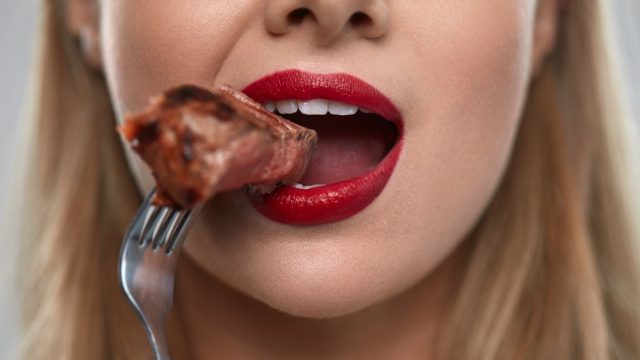
Protein is one of the most useful tools for weight loss and a satiating diet. "Protein can promote weight loss because it increases satiety, making it easier to control your appetite due to feeling full longer," sports dietitian Brittney Bearden tells Texas Health Resources. "Protein also helps maintain calorie-burning muscle mass, which facilitates the weight you lose to come from fat mass." Here are 8 protein-packed foods to always have on rotation.
Chicken
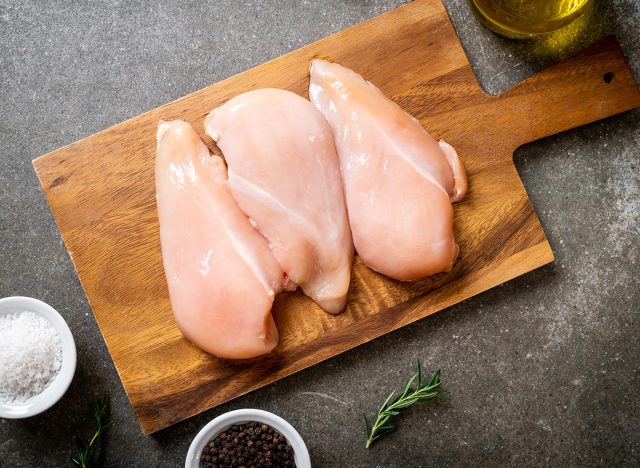
Chicken is a budget-friendly, delicious source of protein. "Lean meats such as chicken, turkey, beef, and pork are excellent sources of high-quality protein as well as important nutrients like iron and zinc," say the experts at Harvard Health. "To avoid unhealthy saturated fat, opt for lean or low-fat meat options such as lean ground beef, pork loin, or skinless chicken breasts."
Salmon
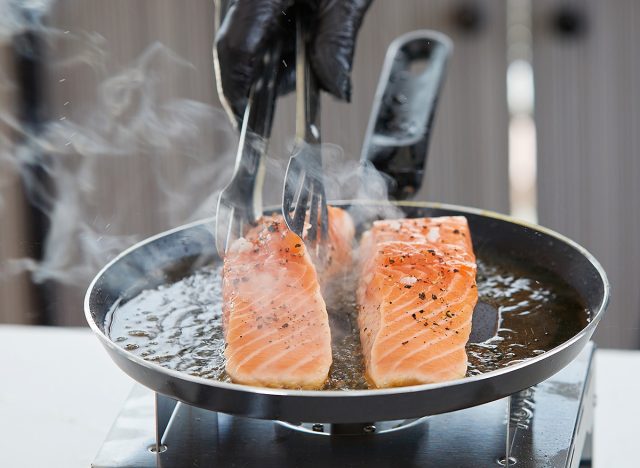
Salmon is a great source of protein as well as healthy fats. "Fish like salmon, tuna, and mackerel are not only rich in protein but also contain omega-3 fatty acids, which are beneficial for heart health," say the experts at Harvard Health. "Look for seafood options that are lower in methylmercury, such as salmon, anchovies, and trout."
Lean Beef
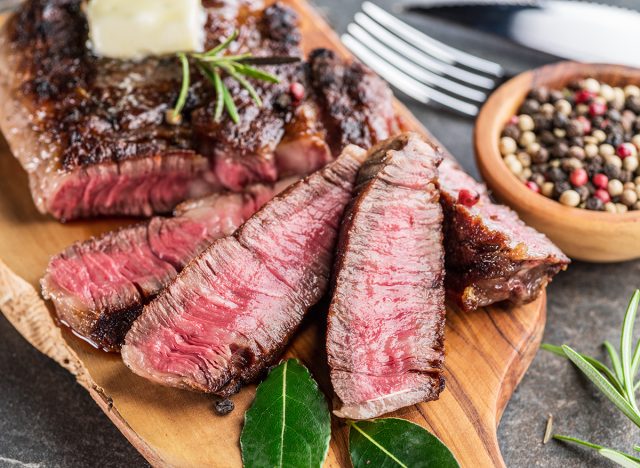
Animal protein, such as lean beef, contains all nine essential amino acids. "Consumption of lean meat is a valuable addition to a healthy diet because it provides complete protein and is a rich source of vitamin B(12), iron, and zinc," according to the National Institutes of Health. "Beef [is] also an important food source of many other nutrients, including niacin, vitamin B(6), phosphorus, and potassium."
Shrimp
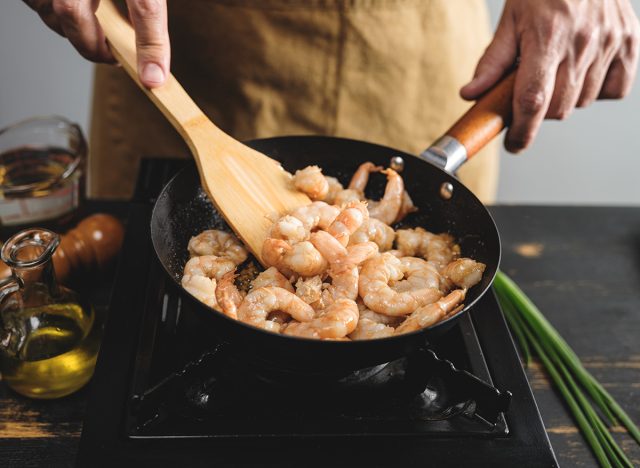
Shrimp provides wonderful bang for the buck when it comes to protein. "Shrimp is a lean source of high-quality protein. However, because it is low in total fat it is also low in omega-3 fatty acids," Alice H. Lichtenstein, DSc, tells Tufts Health. "When preparing shrimp it is best added to a stir-fry with lots of vegetables or to a lightly dressed salad. Avoid adding to dishes where the base is cream or butter because you significantly increase both the calories and saturated fat."
Eggs
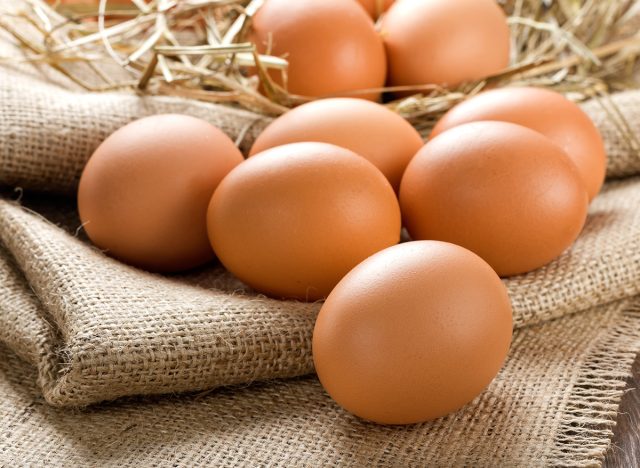
Eggs are versatile and a good source of fats and protein. "Each egg contains 6.3 grams of protein and all nine essential amino acids to support muscle growth, recovery, and maintenance," Rachel Bunch, RD, LD, tells Parkview Health. "The egg yolk contains 2.7 g protein and the egg white contains 3.6 g protein. Egg protein is recognized to have the highest attainable protein digestibility-corrected amino acid score."
Peanut Butter
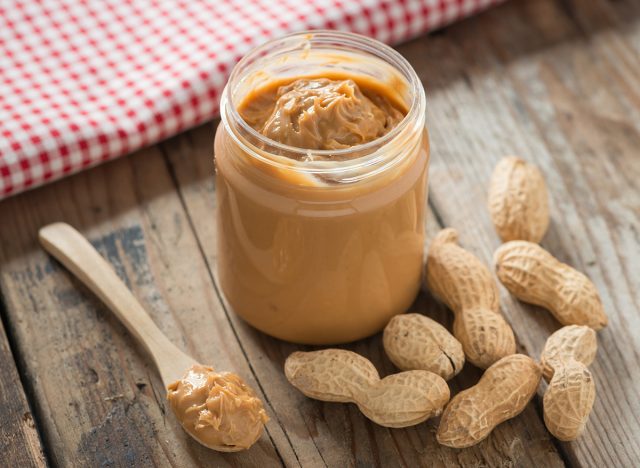
"Peanut butter's combo of fiber (about two grams per tablespoon) and protein (around four grams per tablespoon) packs a powerful appetite-suppressing punch," according to Denver Health Medical Plan. "A study in the British Journal of Nutrition found that people who ate peanuts or peanut butter for breakfast experienced a significant reduction in the desire to eat for up to 12 hours."
Quinoa
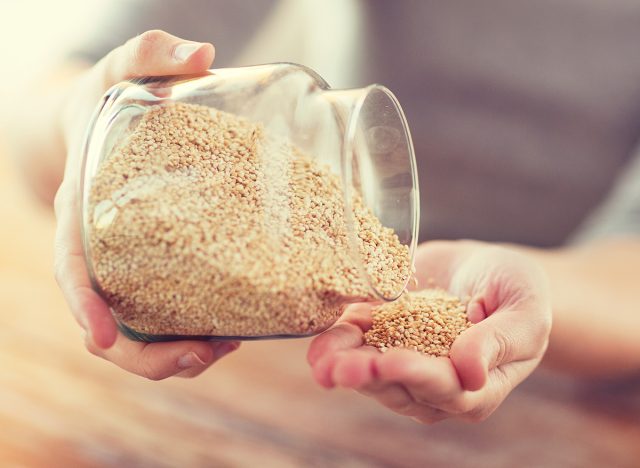
"Quinoa is a plant-based protein source that is also a complete protein," say the experts at Harvard Health." A cup of cooked quinoa provides about 8 grams of protein and 5 grams of fiber. Quinoa is also a good source of minerals such as manganese, phosphorus, and copper.
Lentils
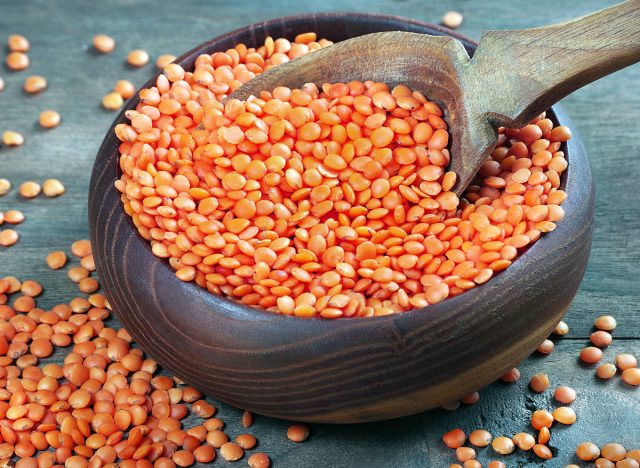
Lentils are high in protein and antioxidants. "Lentils have been around for ages, but it's taken a while for us to realize how powerful they are for our bodies," dietitian Elyse Homan, RD, tells the Cleveland Clinic. "They aren't just a cheap alternative to meat anymore. They can be the foundation for a variety of meals and make a real difference to your health."
💪🔥Body Booster: Protein is a powerful weapon in your weight loss armory.




